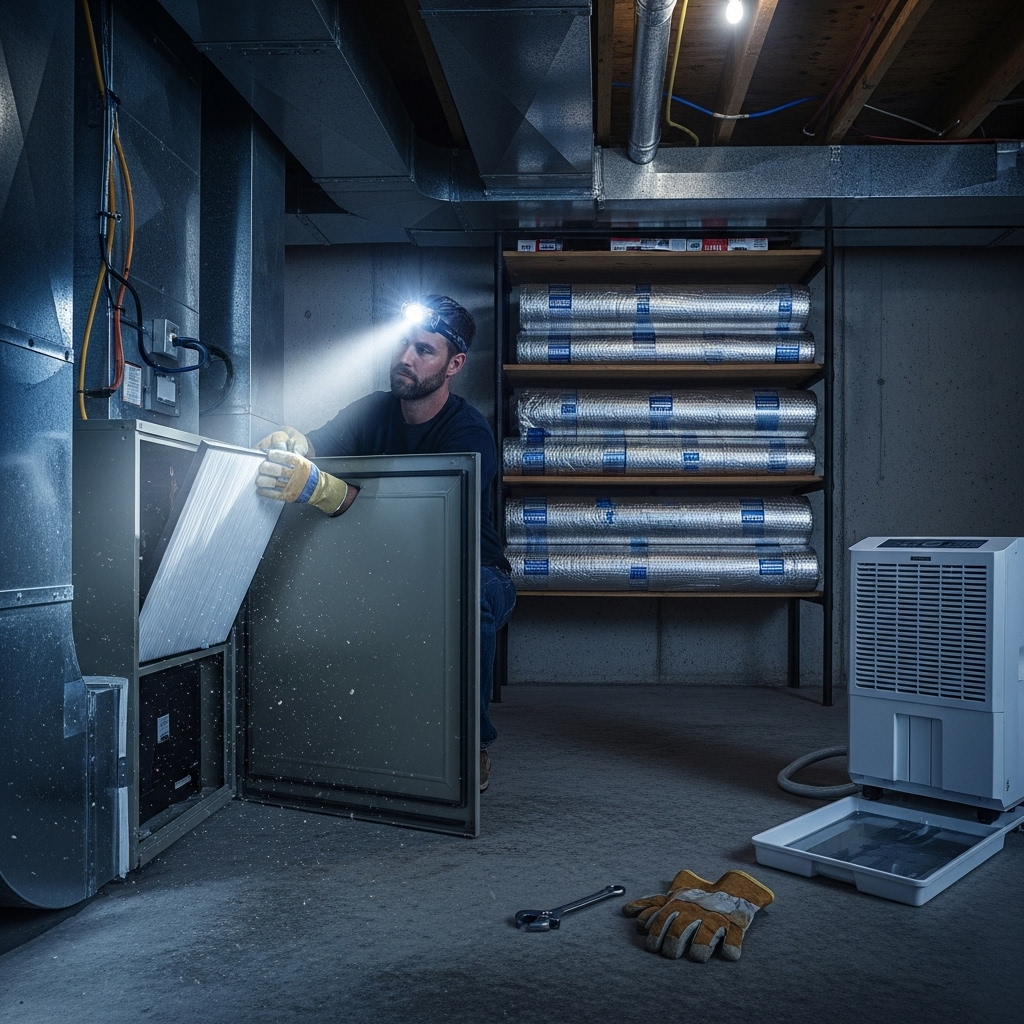Reliable HVAC performance in Elizabeth, New Jersey depends on consistent maintenance of your duct system. Proper sealing, clean returns, and intact insulation keep air moving efficiently while protecting indoor air quality. This guide explains ongoing maintenance requirements after repairs, offering seasonal routines, inspection checkpoints, and practical tips tailored to local homes. If you are building your schedule today, remember that specialized testing and complex sealing often call for professional air duct repair to confirm long-lasting results.
Because Elizabeth’s climate ranges from humid summers to cold winters, ducts encounter temperature swings that challenge seals and insulation. Basements, attics, and crawl spaces each introduce different risks. The maintenance steps below help you stay ahead of issues, extend the life of previous repairs, and protect comfort in every season.
Quarterly maintenance routine
Divide the year into manageable checkpoints so you never fall behind.
- Filter replacement and fit check: Replace or clean filters per manufacturer guidance and verify a tight seal at the filter slot to prevent bypass.
- Return grille inspection: Vacuum dust buildup and confirm no furniture or drapes block airflow.
- Quick tissue test at registers: Compare airflow room to room to catch new restrictions early.
- Visual seam scan near the air handler: Look for peeling tape or cracking mastic that signals movement or vibration.
Quarterly checks require minimal time but deliver outsized benefits by spotting early failures before they escalate.
Seasonal deep-dive in Elizabeth
At the start of each heating and cooling season, perform an expanded inspection focusing on temperature and humidity stress points.
- Spring: Examine attic ducts for insulation gaps and replace damaged vapor barriers before summer heat arrives.
- Summer: Verify that foil tape remains adhered in high-heat areas; re-press or replace sections as needed.
- Fall: Inspect basements and crawl spaces for moisture and re-seal seams susceptible to winter contraction.
- Winter: Check for condensation signs around returns and ensure supply insulation is intact to prevent heat loss.
Document findings with photos and notes so you can compare year over year.
Post-repair verification and care
After any repair project, plan follow-up checks to ensure seals hold and insulation stays intact.
- Initial cure check: Once mastic cures, gently press joints to confirm firmness and adhesion without smearing.
- 30-day inspection: Revisit busy seams—near the air handler and major trunks—for early signs of lifting tape.
- 90-day performance review: Walk rooms and verify temperature balance after extended heating or cooling periods.
These milestones help catch settling or vibration effects before they become leaks.
Maintaining insulation integrity
Insulation protects supply temperatures and limits condensation. Keep it in top shape with focused attention.
- Seal seams: Use UL-181 foil tape on insulation seams and ensure the vapor barrier is continuous.
- Repair tears promptly: Patch or re-wrap damaged areas to prevent moisture intrusion.
- Prevent compression: Secure ducts to prevent heavy items from resting on them in attics or basements.
In Elizabeth’s humid months, intact insulation is especially important to avoid musty odors and moisture damage.
Airflow balancing basics
Small changes in duct condition can shift airflow distribution over time. Maintain balance with periodic checks.
- Register settings: Verify dampers remain in intended positions, especially after cleaning.
- Door undercuts and return paths: Ensure closed doors do not starve rooms of return airflow; consider transfer grilles if needed.
- Obstruction scan: Move rugs, furniture, or storage boxes that drifted into airflow paths.
If a room repeatedly falls out of balance, deeper issues like trunk sizing or return constraints may be involved. Midway through your maintenance cycle, consider consultation with local duct repair services for pressure measurements and professional balancing.
Moisture management
Moisture is a frequent culprit in duct degradation. Build moisture checks into your routine:
- Basement survey: Look for condensation on metal ducts and damp insulation after heavy rains. Address the source and re-seal as needed.
- Attic audit: Inspect for roof leaks and ensure insulation vapor barriers are intact.
- Crawl-space review: Confirm supports keep ducts off damp soil and check for pest intrusion.
By controlling moisture, you protect seals, insulation, and nearby building materials.
Documentation and labeling
Keep a simple binder or digital folder for your HVAC records. Include dates of inspections, photos of repairs, materials used, and any pro service reports. Label critical components—like manual dampers—so future you or a technician can quickly understand the system.
Common pitfalls to avoid
Well-meaning maintenance can backfire if certain rules are ignored.
- Using non-HVAC tape that dries out and fails under heat.
- Skipping surface prep before sealing, leading to poor adhesion.
- Over-tightening flex ducts, which increases resistance and reduces airflow.
- Neglecting return-side leaks that pull in dust and damp air.
- Forgetting post-repair verification, leaving problems undetected.
Frequently Asked Questions
How often should I schedule a full duct inspection? Twice a year—before summer cooling and winter heating—is a practical cadence for Elizabeth homes. Add quick checks after major storms or renovations.
Will re-sealing be necessary over time? Yes. Temperature swings and vibration can loosen seals. Expect occasional touch-ups, especially near the air handler and trunk connections.
Can maintenance improve indoor air quality? Absolutely. Clean returns, good filtration, and sealed ducts reduce dust and odors, helping maintain a healthier environment.
What if I find recurring leaks in the same spot? Reassess the joint: add mechanical fasteners, improve support, or replace the fitting. Chronic failures may indicate design or sizing issues that warrant professional evaluation.
Does insulation type matter? Use HVAC-rated insulation suitable for your environment. In attics, ensure the vapor barrier is intact; in basements, guard against moisture.
Keep your ducts dependable all year
A steady maintenance rhythm preserves repairs, prevents new leaks, and protects comfort through Elizabeth’s changing seasons. Build these routines into your household calendar, document each pass, and address small issues promptly. When diagnostics, sealing, or balancing exceed DIY scope, connect with trusted local experts and schedule professional air duct repair to keep your system efficient, quiet, and resilient.

